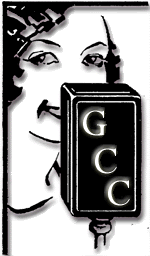Tactical Tuesday~The Devil's in the Details
Hope you all had a great weekend! Don't forget to check out the Spanish Language Diabetes blog linked below, and link it to yours if you maintain a diabetes blog. Once in awhile I have Spanish speakers drift into this little corner of the Internet, and it's nice to provide links if necessary.
And on to Tactical Tuesday~let's welcome Flusters McKnucklesby for this week's discussion!

Many writers, however, suffer from the syndrome known as “overwriting.” Have you ever received a short story or novel back with this comment? You’re not alone. What’s happened is this: you’ve fallen into the Third Grade Handout Pit of Evil and Doom. Or, to put it another way: you’ve included too many details.
Back in the nineteenth century, novelists painted wide landscapes for their settings. Characters were described in exhaustive detail so that readers would be able to pick them out in a crowd in a millisecond. But something has changed in our cultural landscape since then, and it’s this: television and film.
TV and film give us all that information in an instant. What does this mean for writers? Well, it means that you have a lot less time to get your point across. Readers are usually also viewers, and although they understand the author/reader transaction is different from the editor/viewer transaction, they still have little patience for exhaustive detail. Putting it bluntly: all that detail bogs down your story.
My theory: choose one or two interesting details, and stick to them. Then move on. It’s best to work the details into action. Have the character do something. Compare these two paragraphs (both of which are horrible first drafts, so don’t hold them to some great artistic standard):
#1
Ted wore a brown derby hat, mismatched socks and a rumpled shirt. His eyes were a blue so dark they were nearly black. His breathing sounded like a dog on a very hot day. Ted seemed angry, and Liesel was worried she’d upset him further.
#2
Ted hurled his brown derby hat to the floor. “Go screw yourself, Liesel.” His eyes flashed an angry blue-black, and he panted heavily, like a dog on a sweltering August afternoon.
“Oh, Teddybear.” Liesel reached out and smoothed Ted’s rumpled shirt, clucking her tongue at his mismatched socks. Why she put up with his rages, she’d never know. “Take a few deep breaths and calm down.”
Okay, they are both pretty crappy, but I’d argue #2 beats #1 any day of the week. Something is happening in #2. Although #2 is longer, and traditional wisdom in writing says less is more (say it aloud: Omit unnecessary words~thanks, Strunk and White!), #2 is superior in that it moves the story along.
Look at your work-in-progress. Do you have long paragraphs of description? Highlight them, hit copy, and open a new document. Paste in the descriptive paragraph. Now, try to get the most crucial details across while moving the scene forward. I think you’ll be pleased with the difference.
That’s it from me!
POSTSCRIPT~I'm bringing this post on Flogging the Quill, linked by the inimitable Ray Rhamey (below, in comments), to the front because it contains such valuable advice. Please check it out for further reading on the topic of overwriting.
And on to Tactical Tuesday~let's welcome Flusters McKnucklesby for this week's discussion!

The Devil's in the Details
My kids have brought home papers in the last few weeks explaining how to add more details to a story or report. When you were in third grade, you probably received such things, too. Lists of adjectives… even the dreaded adverbs. They’re useful documents for third graders, who usually (!) turn in the bare minimum unless pressed to expand.Many writers, however, suffer from the syndrome known as “overwriting.” Have you ever received a short story or novel back with this comment? You’re not alone. What’s happened is this: you’ve fallen into the Third Grade Handout Pit of Evil and Doom. Or, to put it another way: you’ve included too many details.
Back in the nineteenth century, novelists painted wide landscapes for their settings. Characters were described in exhaustive detail so that readers would be able to pick them out in a crowd in a millisecond. But something has changed in our cultural landscape since then, and it’s this: television and film.
TV and film give us all that information in an instant. What does this mean for writers? Well, it means that you have a lot less time to get your point across. Readers are usually also viewers, and although they understand the author/reader transaction is different from the editor/viewer transaction, they still have little patience for exhaustive detail. Putting it bluntly: all that detail bogs down your story.
My theory: choose one or two interesting details, and stick to them. Then move on. It’s best to work the details into action. Have the character do something. Compare these two paragraphs (both of which are horrible first drafts, so don’t hold them to some great artistic standard):
#1
Ted wore a brown derby hat, mismatched socks and a rumpled shirt. His eyes were a blue so dark they were nearly black. His breathing sounded like a dog on a very hot day. Ted seemed angry, and Liesel was worried she’d upset him further.
#2
Ted hurled his brown derby hat to the floor. “Go screw yourself, Liesel.” His eyes flashed an angry blue-black, and he panted heavily, like a dog on a sweltering August afternoon.
“Oh, Teddybear.” Liesel reached out and smoothed Ted’s rumpled shirt, clucking her tongue at his mismatched socks. Why she put up with his rages, she’d never know. “Take a few deep breaths and calm down.”
Okay, they are both pretty crappy, but I’d argue #2 beats #1 any day of the week. Something is happening in #2. Although #2 is longer, and traditional wisdom in writing says less is more (say it aloud: Omit unnecessary words~thanks, Strunk and White!), #2 is superior in that it moves the story along.
Look at your work-in-progress. Do you have long paragraphs of description? Highlight them, hit copy, and open a new document. Paste in the descriptive paragraph. Now, try to get the most crucial details across while moving the scene forward. I think you’ll be pleased with the difference.
That’s it from me!
POSTSCRIPT~I'm bringing this post on Flogging the Quill, linked by the inimitable Ray Rhamey (below, in comments), to the front because it contains such valuable advice. Please check it out for further reading on the topic of overwriting.








<< Home